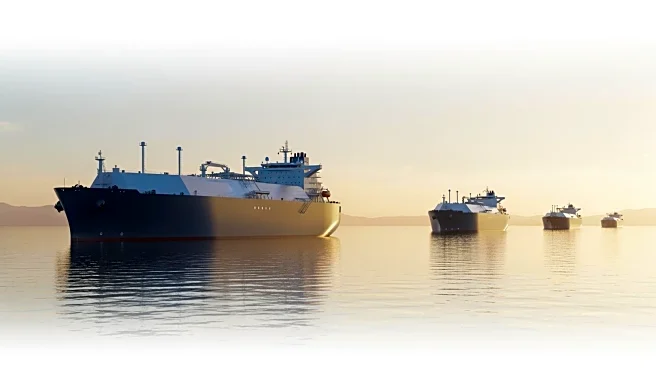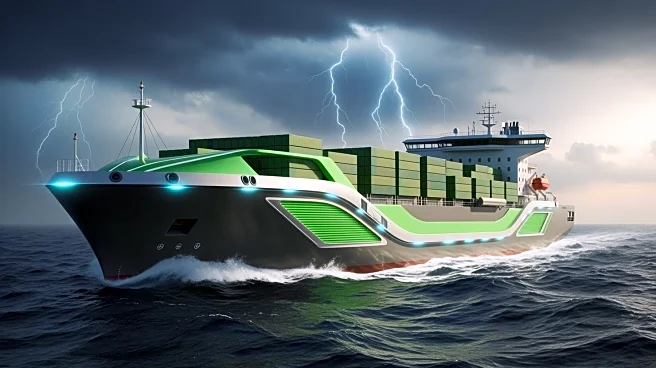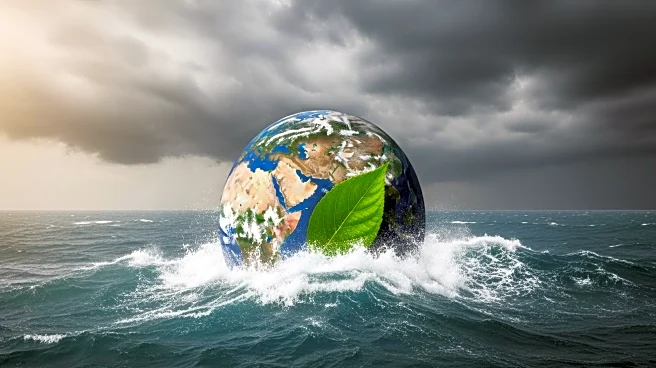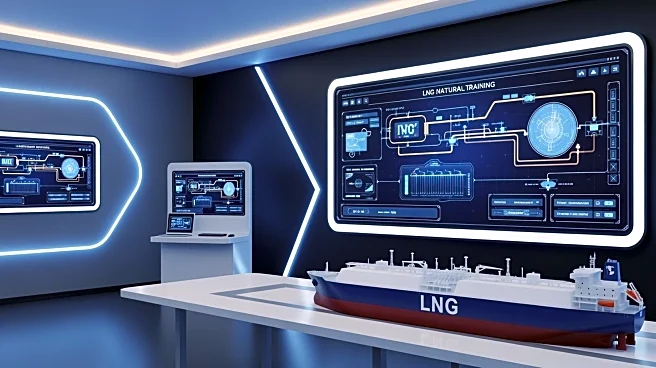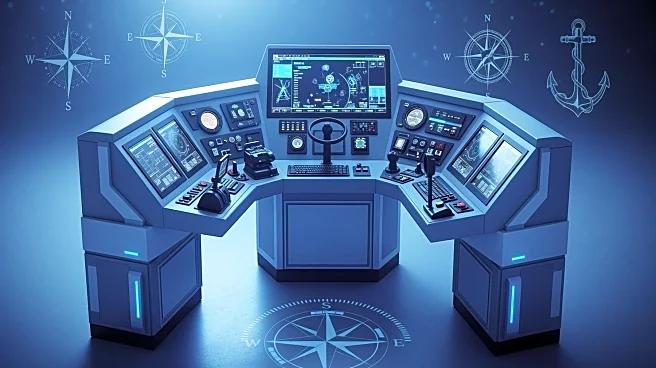What's Happening?
Malaysia’s MISC Group, along with its consortium partners NYK, K-Line, and China LNG Shipping (Holdings), has taken delivery of two new liquefied natural gas (LNG) carriers, named Mihzem and Idd Al Shargi.
These vessels are part of a 12-vessel series built by Hudong-Zhonghua Shipbuilding and are the first to be managed by MISC’s Marine Services arm. The delivery is a significant step in QatarEnergy’s LNG fleet expansion program, aimed at increasing LNG capacity and enhancing energy security. The vessels are equipped with advanced systems that comply with the International Maritime Organization’s environmental standards, making them highly efficient and sustainable. The naming ceremony was attended by representatives from QatarEnergy, Hudong-Zhonghua, classification societies ABS and CCS, and senior management from MISC and its partners.
Why It's Important?
The addition of these new LNG carriers is crucial for QatarEnergy's strategy to expand its LNG capacity and strengthen global energy security. By enhancing its fleet with environmentally compliant and efficient vessels, QatarEnergy is positioning itself as a leader in sustainable energy transportation. This move not only supports Qatar's energy ambitions but also contributes to global efforts to reduce carbon emissions in the shipping industry. The collaboration between MISC and its partners highlights the importance of international partnerships in advancing energy security and sustainability. The new vessels will play a key role in meeting the growing global demand for cleaner energy solutions.
What's Next?
With the new vessels entering service, MISC and its partners will continue to support QatarEnergy’s expanding LNG portfolio. This expansion is expected to facilitate QatarEnergy's commitment to advancing global energy security through cleaner and more efficient shipping. The ongoing collaboration between the consortium partners may lead to further innovations in LNG transportation and potentially more vessel deliveries in the future. Stakeholders in the energy and shipping industries will likely monitor the performance and impact of these new vessels on global LNG supply chains.
